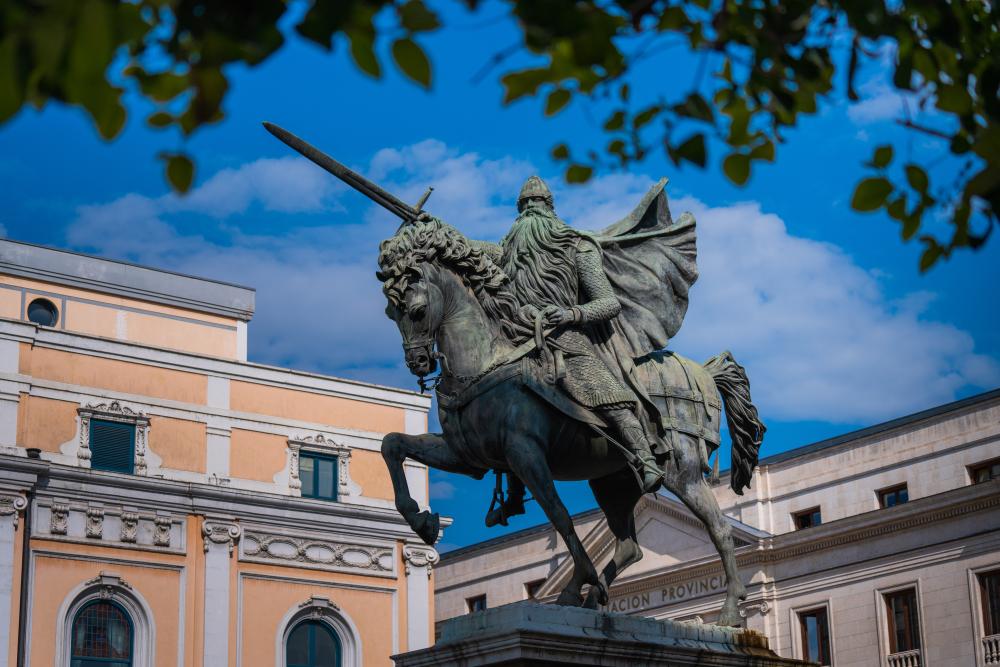1-PROVINCIAL COUNCIL
The Provincial Council has its head office in the Provincial Palace located at the beginning of Paseo del Espolón opposite the Teatro Principal. The Palace was built in 1869 during the Elizabethan period in the place where the old jail had been built under Charles III. It was designed by Burgos Architects Luis Villanueva and Ángel Calleja in the classical style and the palatial monumental structure of the period. In its interior the imperial staircase and paintings by Burgos artists like Vela Zanetti or Marcelino Santa María are worth seeing.
2.TEATRO PRINCIPAL
The theatre, designed by Francisco de Angoitia and built on the riverbank of the Arlanzón, was inaugurated in 1858. This Elizabethan style building is located opposite the statue of El CID. The theatre was closed in 1946. After its restoration in 1997 it opened again, to be part of the cultural landscape of the city. The restoration was managed by architect José María Pérez Gónzalez. Today, the building houses a library, a conference room and an exhibition hall.
3-PALACE OF THE MARQUISE OF VILUEÑA
The Palace of the Marquise stands out among all the buildings that were built to replace the medieval walls of the city. The Palace dates from the beginning of the 19th century and stands out for its neoclassical facade and sober style. In the 19th the Kings stayed in the Palace whenever they came to the city. Some gardens were built opposite the palace, on the north bank of the river Arlanzón. These gardens are now part of El Paseo del Espolón.
4-TOWN HALL AND THE STATUE OF CHARLES III
The town Hall was built between 1784 and 1791 by González de Lara, on top of what used to be “la puerta de las Carretas” (the gate of the carriages) which is the main entrance to the plaza mayor. This arcade connects Paseo del Espolón and the Plaza Mayor. In the middle of the square we can see the statue of Charles III which was built in 1784 by Bergaz.
5-PASEO DEL ESPOLÓN – SCHOOL OF DESIGN – PAVILION
As a result of the profound transformation of the enlightenment of the 16th century we can find beautiful buildings along Paseo del Espolón including: The School of Design with its neoclassic style which became El Consulado del Mar (Sea Consulate) at the end of the 18th century. Subsequent refurbishments added some sculptures and a pavilion for musical activities that give this promenade a Bohemia and cosmopolitan feel.
6-PALACE OF JUSTICE
In 1837, Burgos obtained the headquarters of the “Audiencia Territorial” (Territorial Court) after being recognised as capital of the province. It was relocated many times over several decades, and the land of an ancient monastery was finally chosen to build a new building.
This was built in 1833 by prestigious architect David Ruiz Jareño in a neoclassical style. It blends well into the surroundings. Its façade stands out for its elegance and simplicity.
7-PASEO DE LA ISLA
Paseo de la Isla takes its name from the islands that the river Arlanzón used to have along its course through the city. We can find almost a hundred plant species. What´s more, there are several monuments scattered throughout the promenade such as: The arches of Castilfalé in Renaissance style and a fountain from the monastery of San Pedro de Arlanza.
On one side of the promenade there is the elegant Palace of la Isla, in a romantic-neo-Gothic style. Juan de Muguiro ordered the construction of this Palace by the architect Daniel Zavarain 1883. The Palace was sold to the Provincial Council and the Town Hall in 1982. Nowadays it is the head office of Instituto Castellano-Leonés de la lengua.
8-CALLE EDUARDO MARTINEZ DEL CAMPO – PALACIO ARZOBISPAL – FACULTAD DE TEOLOGÍA EIGLESIA DE LAS SALESAS
This Street became the main artery of the bourgeois city during the second half of the 19th century. On this street we can find the Faculty of Theology dating back to 1861, opposite a new Archiepiscopal Palace was built in 1916 in historicist style. The same style as that successfully used in the nearby Monastery of las Salesas.



